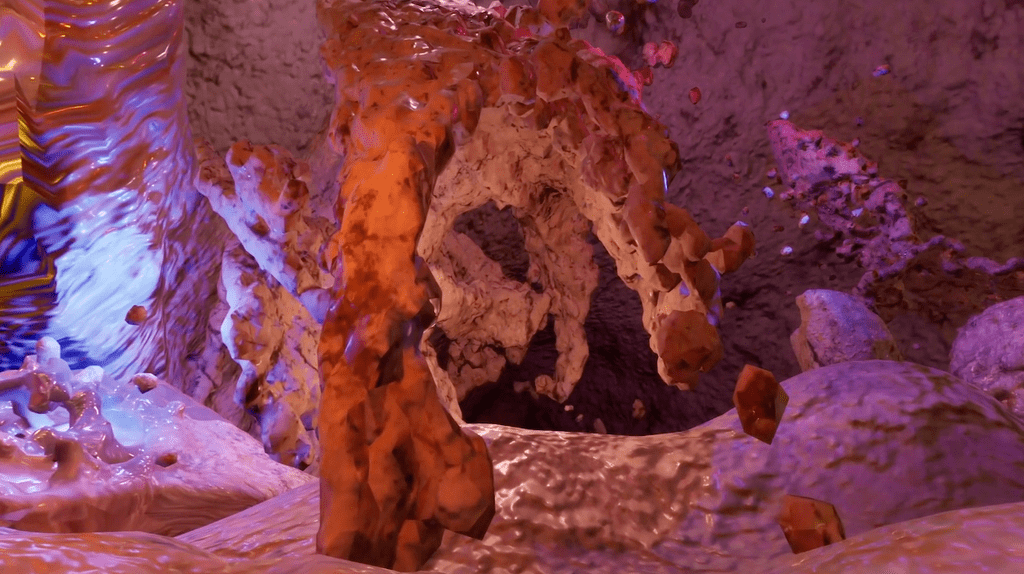Editor’s note: Carleton sophomore Sam Johnson-Lacoss (Class of ‘24)’s interest in virtual reality (VR) started in 2018, when he began doing research on the subject for the California Institute of Technology. From there, he attended seminars, and eventually bought a VR set of his own. This past year, Sam began working with ITS staff to help bring interactive worlds to campus and introduce a futuristic style of learning.
How Carleton’s VR works


Carleton currently has two VR systems: the HTC Vive, which is physically tethered to a computer via cords, and the 2020-2021 Meta Quest (formally known as the Oculus Quest), which is untethered. Sam describes the HTC Vive as “super heavy-duty”, while the 2020-2021 Meta Quest system is lighter and more portable. Within both systems, certain elements remain similar: the VR goggles essentially consist of a “monitor” directly in front of the user’s eyes. Users can also utilize two hand sensors to create the illusion of hands and aid in movement throughout the virtual space. Cameras that are linked to the VR headset track how the user moves and create positional data, which then allows the images of the monitor to change, creating a sense of moving through a virtual world. The main difference between the HTC Vive and the Meta Quest are the camera placement. For the HTC Vive, the cameras are mounted either on a wall or, in Carleton’s case, on tripods so that the system is a bit more portable. Meanwhile, the Meta Quest cameras are attached directly to the user, making it easier to move from place to place.
Dancing in a virtual space
Sam’s first project involves helping Zoe Cinel, who teaches the class “Live Performance and Digital Media” (THEA-320) every other year, integrate virtual reality into her class. Students in Zoe’s class will interact with two virtual environments. The first is Wander, an app that utilizes Google Street View to allow users to experience places all around the world through VR. The second is Karst, which consists of three scenes created by New York based artist Snow Yunxue Fu in 2018: a cavern, an ice maze, and a human heart. Sam is currently making sure these three scenes are optimized for student performers.
Zoe first got the idea for this project through the online exhibition “Refresh: The Space in Between A Screen and A Body”, which she curated in 2021. The project involves dancer Lela Pierce creating routines inspired by and using Snow Yunxue Fu’s three settings. You can view the virtual gallery (link above) as well as Fu’s artist statement on “Karst”. The exhibit “examines ways in which we embody virtual spaces and digital technology,” and notes that, while “the virtual reality experience is typically internal and limited to those who possess the VR equipment, Refresh seeks to democratize (the) experience by bringing the internal outwards.”
In the class, participants get to try on the goggles and dance reactively to each environment. Their scenes and dances are then projected onto a screen for the other participants to observe. Zoe states, “This assignment specifically will prompt them to create embodied responses to a digital environment (and its physical elements).” She continues by stating that the assignment helps students “Learn to purposely and meaningfully incorporate digital media into live performance.”
A walk through the wilderness

Sam’s second project stems from a request sent by Keely Fisher (‘22), who plans to compare two walks in the Grand Canyon: one she physically took over the 2022 spring break, and another taken in virtual reality. Keely says she had the idea after reading an article on 87-year-old George Hetrick’s dream-fulfilling hike through the Grand Canyon, which he accomplished through virtual reality with his wife and son. This made Keely wonder: was a virtual reality-based experience in the wilderness “as valid” as a physical one? She also considered the fact that virtual reality can be a good alternative to real-life wilderness experience for those who can’t necessarily travel or complete such intense hikes. The main question that intrigued Keely eventually became “How can we use VR to give everyone [an] experience in [the] wilderness?”
Keely feels that, currently at least, virtual reality does not come close to the actual outdoors. After walking the Grand Canyon virtually, she stated “At no point in time did I feel fully immersed.” This was mostly due to a lack of sound and slightly choppy graphics. Keely also notes that virtual reality isn’t particularly accessible for every single person. While some virtual reality glasses can cost as low as $20, a full Meta Quest set that includes hand sensors can cost almost $500. She theorizes that within five or so years, a virtual wilderness will be much more comparable to the real thing. However, she still somewhat felt the “grandeur” and “awe” of the Grand Canyon in virtual reality, much more so than in a one-dimensional photo.
Carleton VR’s future uses
Eventually, Sam and Wiebke Kuhn, Director of Academic Technology, want to move the HTC Vive system to a new and improved IdeaLab. There, students would be able to experiment with VR for both personal and academic use. Sam would also like to set up a system to allow students to “check out” the Meta Quest system and use it within the comfort of their own space. Unfortunately, a few bugs still need to be worked out. Sam worries that students may forget to return the Meta Quest system, but is working out a solution with Wiebke. Sam envisions a universe in which students could eventually put in a request for a project, and he could then work with them on making that request a reality.
Featured image for this post is from the Chronicle of Higher Education.
